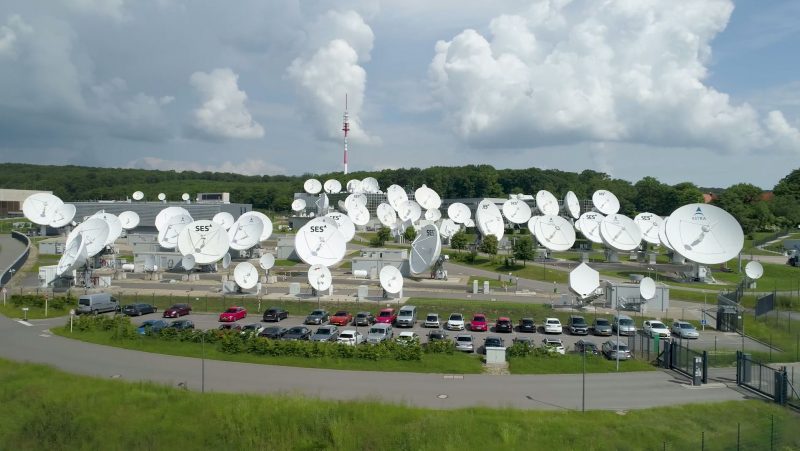District Court Sides With SES Over Intelsat in C-Band Claims

Photo: SES
A judge has sided with SES in an ongoing dispute over $421 million of Intelsat’s C-band proceeds, ruling that the previous bankruptcy court erred in siding with Intelsat. The June 22 opinion was released just after Intelsat pulled out of potential merger talks with SES.
Senior U.S. District Judge Robert Payne’s opinion says the bankruptcy court’s decision will be reversed, and sent the case back to bankruptcy court. The case was in the U.S. District Court for the Eastern District of Virginia, Richmond division, case No. 3:22-cv-668. “The judgment of the bankruptcy court will be reversed and this matter will be remanded to the bankruptcy court for further proceedings consistent with this opinion,” Judge Payne said in the opinion, accessed via Pacer.
SES applauded the ruling, but Intelsat said it does not believe it will change the outcome in the case.
At issue is SES’s claim to a portion of Intelsat’s C-band payout. SES argued that the two companies agreed to a 50/50 split of C-band proceeds when they worked together as part of the C-Band Alliance. But the FCC in 2020 allotted Intelsat $897 million more in incentive payments to clear the spectrum quickly, and Intelsat refused the 50/50 split.
SES first filed a $1.8 billion claim against Intelsat in 2020 when the operator was in bankruptcy, for $450 million in compensation and $1.35 billion in punitive damages. Intelsat argued that the C-band agreement was for the proceeds of a market-based approach, and the agreement was voided when the FCC chose to use a public auction. The bankruptcy court sided with Intelsat.
SES appealed the decision in October 2022, asking for $421 million, which would fulfill the 50/50 split.
In his opinion, Judge Payne called the original agreement between Intelsat and SES “broad, vague, and confusing.” Yet he took issue with how the prior bankruptcy court ruled, saying there is substantial evidence both SES and Intelsat were “acutely aware” that the FCC could adopt a public auction and went into the deal with that knowledge.
The ruling details evidence that after the FCC announced its decision, Intelsat and SES continued to work together as part of the C-Band Alliance, and Intelsat told investors to expect a 50/50 split. Meanwhile, Intelsat began its own negotiations with the FCC and kept that information from SES for a time. The ruling includes descriptions of testimony and evidence from earlier in the case, including a 3 a.m. call from former Intelsat CEO Stephen Spengler to SES CEO Steve Collar that Intelsat would not respect the split.
“The simple fact is that there is very strong extrinsic evidence favoring SES’s position, and the amended opinion does not reflect that it was considered,” the ruling says. “By not addressing this evidence, the bankruptcy court committed clear error.”
The court did dismiss an SES claim that Intelsat committed unjust enrichment.
SES applauded the court’s decision. “SES achieved a major appellate victory in its commercial contract case against Intelsat over the latter’s refusal to honor its promise to evenly split billions of dollars the parties received for clearing a critical band of electromagnetic spectrum (the C-Band) for 5G wireless use,” a representative said in a statement to Via Satellite.
An Intelsat representative, however, said the company does not believe the bankruptcy court will change the outcome. “We disagree with Judge Payne’s decision on the contract, but we do not believe that this will change the ultimate decision in this case,” the representative said in a statement to Via Satellite. “Judge Phillips heard all of the evidence in the case as the trier of fact, and we remain confident that he will come to the same conclusion as he did in his original opinion on the merits of SES’s claims.”
Both operators are in the second phase of the C-band clearing process with a deadline of Dec. 5, 2023 in order to receive the incentive payments. Overall, satellite operators received relocation costs and a total of $9.7 billion to clear the spectrum, while the auction in 2021 grossed $80.9 billion, setting a record as the highest-grossing FCC auction.